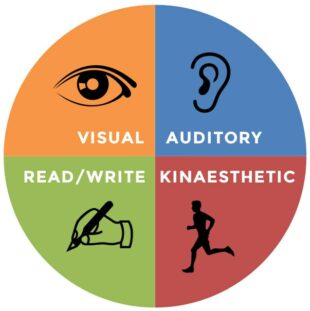Are you struggling to find the right balance between structure and flexibility in your coaching or therapy sessions? This challenge can often lead to frustration and hinder your effectiveness as a professional.
The rigidity of sticking too closely to a plan can stifle your ability to respond to clients’ evolving needs, while too much flexibility can cause sessions to lose focus and direction. This delicate balance is crucial yet difficult to achieve.

The solution lies in mastering the competency of “Structured yet Flexible Client-Centered Coaching and Therapy.” By integrating structured frameworks with adaptive techniques, you can create a responsive practice that meets each client’s unique needs.
This approach enhances session effectiveness, empowers clients, and fosters a supportive environment for growth and fulfillment.
Understanding the Client-Centered Therapy or Coaching Approach
A client-centered approach in coaching and therapy requires a delicate balance between structure and flexibility. This balance ensures that each session is tailored to the client’s unique needs while pursuing clear goals. Here’s what this approach entails:
- Structured Planning: Outlining the process, goals, and milestones.
- Responsiveness: Adapting to the client’s feedback, emotions, and changing circumstances.
- Framework for Understanding: Providing clients with a solid framework while allowing room for self-discovery and autonomy.
This approach draws from person-centered therapy and adaptive coaching models, advocating for an environment that supports the client’s growth while being versatile enough to pivot as necessary.
Developing the Client-Centered Coaching or Therapy Competency
To develop the competency of balancing structure and flexibility, practitioners need to nurture several critical skills and attitudes. Here’s a step-by-step pathway:
- Learn and Plan: Become well-versed in various coaching and therapeutic models to build customizable plans tailored to each client’s needs.
- Build Adaptability: Engage in exercises like improvisational workshops or role-playing scenarios to enhance your ability to think on your feet.
- Cultivate Active Listening: Ensure you’re fully attuned to the client’s verbal and non-verbal messages, informing how you tailor your approach.
- Practice Empathy: Deepen your empathy to understand clients’ perspectives, considering their emotions and thoughts when structuring sessions.
- Seek Feedback: Regular client feedback can provide insights into what works and what may need change within your structured approach.
- Implement Reviews: Integrate regular review points to assess progress and make necessary adjustments.
- Reflect and Adjust: Dedicate time after sessions for reflection to consider how future sessions can be better aligned with client needs.
By following these steps, a coach or therapist will be well-equipped to offer a service that is methodically sound and organically responsive, thus honoring the principles of client-centered care.
Applying the Client-Centered Therapy or Coaching Approach in Practice
To be effective, it’s essential to apply the structured yet flexible approach pragmatically within the coaching and therapy environment. Here’s how:
- Tailored Framework Construction: Begin with a flexible framework that includes key milestones and potential paths, personalizing further as you gain more insight into a client’s motivations and challenges.
- Attuned Session Flow: Design each session with structured activities while remaining open to spontaneous exploration based on the client’s responses.
- Resilient Goal Reevaluation: Periodically reassess and redefine goals together to ensure they remain relevant.
- Reflective Adjustment: Engage in post-session reflection to assess what worked well and what may need adjustment for future sessions.
- Collaborative Approach: Involve the client in decision-making to ensure that any structured interventions resonate with their personal journey and choices.
- Responsive Adaptation: Be prepared to diverge from the initial plan to address immediate needs or deep-seated issues, reflecting a flexible response to the client’s reality.
Cognitive Hypnotic Coaching and Psychotherapy (CHCP) Advantage

Embracing the versatility and depth of the CHCP approach can significantly bolster a coach’s and therapists ability to provide structured yet flexible, client-centered therapy or coaching. CHCP offers a variety of techniques and concepts that fortify this critical competency.
- Integration of Techniques: CHCP equips coaches and therapists with techniques from Hypnosis, Neuro-Linguistic Programming (NLP), Cognitive Behavioural Therapy (CBT), and more, allowing for a diverse toolkit within a structured framework.
- Subconscious Alignment: Hypnosis and subconscious communication techniques help align the client’s deeper goals with the coaching and therapy process.
- Behavioural Flexibility: CHCP trains coaches and therapists in facilitating behavioural flexibility, helping clients navigate change while staying anchored to their goals.
- Holistic Assessment Tools: The CHCP framework includes holistic tools that establish an adaptable coaching and therapy structure attuned to the client’s psychological, emotional, and behavioural patterns.
- Empowerment Focus: A cornerstone of CHCP is empowering clients through self-awareness, informing how coaches or therapists tailor their structured approach to fit individual client narratives and contexts.
Overcoming Challenges and Pitfalls in Client-Centered Therapy or Coaching
Balancing structure and flexibility presents challenges. Here are strategies to overcome them:
- Rigid Adherence to Structure: Use mindfulness to stay adaptable, ensuring session plans can be modified in response to the client’s needs.
- Excessive Flexibility: Apply CHCP’s goal-setting framework to maintain purposeful progression amidst flexibility.
- Client’s Resistance to Structure: Integrate CHCP strategies like metaphors or storytelling to embed structure within engaging activities.
- Unplanned Digressions: Use CHCP models for active listening and reframing to steer conversations back on track.
- Balancing Diverse Client Needs: Utilize CHCP holistic assessment to personalize plans and maintain flexible adaptation grounded in each client’s individuality.
Ethical Considerations in using a client-centered therapy or coaching approach
Ethical practice is essential when balancing structure and flexibility in client-centered coaching or therapy:
- Client Autonomy and Empowerment: Respect the client’s right to self-determination. Co-create structures and plans that enhance their sense of agency.
- Informed Consent: Ensure clients fully understand and consent to the coaching process, including how structure and flexibility will be used.
- Confidentiality and Trust: Maintain confidentiality, establishing trust that flexible interactions won’t compromise private information.
- Cultural Competence: Honor each client’s individuality and cultural context, ensuring practices are inclusive and respectful.
- Boundaries and Professionalism: Maintain clear professional boundaries, guarding against any boundary crossings or dual relationships.
Conclusion
Balancing structure and flexibility in client-centered coaching and therapy demands a commitment to principles and plans, coupled with readiness to divert from the mapped route when necessary. This balance is the hallmark of a mature, client-focused practice.
By cultivating this competency, practitioners create an adaptable, inclusive, and supportive environment that fosters self-discovery and allows clients to navigate their journeys with autonomy and empowerment. Leveraging Cognitive Hypnotic Coaching and Psychotherapy techniques equips professionals with a versatile toolkit that ensures the coaching approach is both structured and personally resonant.
While finding this equilibrium poses challenges, mastering it transforms coaching and therapy into profound experiences. Embrace the flexibility within structure, and watch it unfold into a pathway of growth for both client and coach.
If you would like to learn to use an eclectic approach in your coaching sessions, check out the Cognitive Hypnotic Coaching® Diploma

